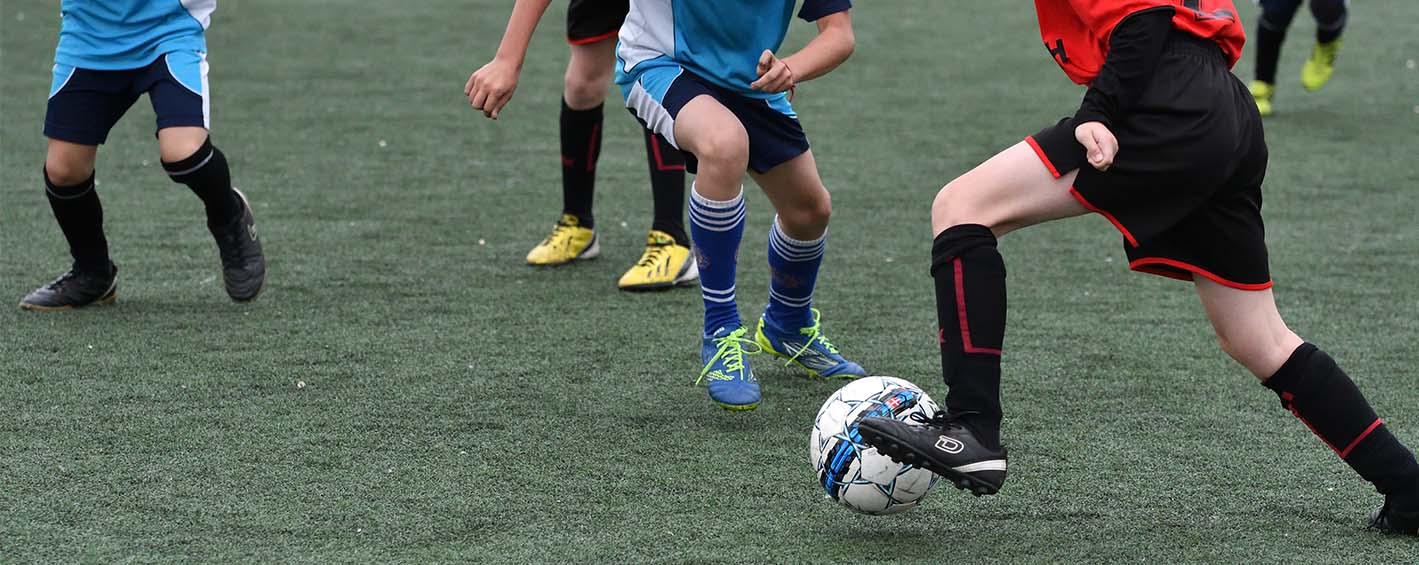Share it
Learning to go shoulder to shoulder with opponents and resist being pushed off the ball helps players remain composed and strong, even when facing aggressive challenges.
 Maintaining possession under pressure is a crucial skill for youth soccer players. Here’s how coaches can effectively teach this to young athletes.
Maintaining possession under pressure is a crucial skill for youth soccer players. Here’s how coaches can effectively teach this to young athletes.
1. Body Positioning and Balance
The key to staying on the ball in shoulder-to-shoulder challenges lies in proper body positioning and balance. Players should be taught to lower their center of gravity by bending their knees slightly, positioning their body sideways with one shoulder facing the opponent, and keeping their feet shoulder-width apart. This position helps absorb contact and provides a stable base. Keeping their body between the opponent and the ball (shielding) makes it harder for defenders to dispossess them.
2. Core Strength and Physical Conditioning
Strong core muscles are essential for balance and stability in physical duels. Coaches should incorporate core-strengthening exercises like planks, squats, and lunges into training routines. These exercises help players hold their ground when an opponent pushes. Resistance band exercises can also develop leg strength, improving players' ability to plant their feet and resist being knocked off balance.
3. Leverage and Shoulder Engagement
Teach players to engage their shoulder effectively when facing contact. Emphasize the importance of leaning into the opponent without pushing or extending the arms, as this could result in a foul. Players should practice using their shoulder and upper body strength to maintain balance and create space. Controlled partner drills can help players practice shoulder-to-shoulder contact while maintaining balance.
4. Confidence Under Pressure
The mental aspect of shoulder-to-shoulder play is also vital. Players must feel confident when challenging for the ball. Coaches should simulate game situations in training where players are encouraged to compete physically for possession. Using fun, competitive drills like 1v1 shield-and-turn activities helps build familiarity with contact and boosts confidence in physical duels.
5. Using the Arms and Hands Legally
Players can learn to use their arms effectively without fouling. Keeping the arms slightly bent and using them to maintain distance from the opponent can help keep balance. Emphasize keeping the hands within the player’s natural frame to avoid fouls.
6. Shielding and Awareness Drills
Shielding drills are essential for building this skill. Set up scenarios where players have to receive a ball, shield it under pressure, and then make a pass. Start with a passive defender and gradually increase the intensity to simulate match conditions. Encourage players to use their body to protect the ball, keeping their head up to be aware of teammates and potential passes.
7. Small-Sided Games
Small-sided games (1v1, 2v2, 3v3) are ideal for encouraging physicality and shoulder-to-shoulder challenges in realistic situations. Smaller games mean more touches on the ball, more opportunities for contact, and therefore more practice in learning to keep possession under physical pressure.
Key Takeaways:
-
Maintain a low center of gravity, with knees bent for stability.
-
Use proper body positioning to shield the ball effectively.
-
Build core and leg strength for improved balance and resilience.
-
Practice leaning into opponents without pushing to maintain possession.
-
Incorporate shielding drills and small-sided games to build confidence and skill in shoulder-to-shoulder situations.
By combining physical conditioning, proper technique, and mental confidence, youth soccer players can learn to compete effectively in shoulder-to-shoulder situations, keeping possession of the ball and contributing to their team’s success.